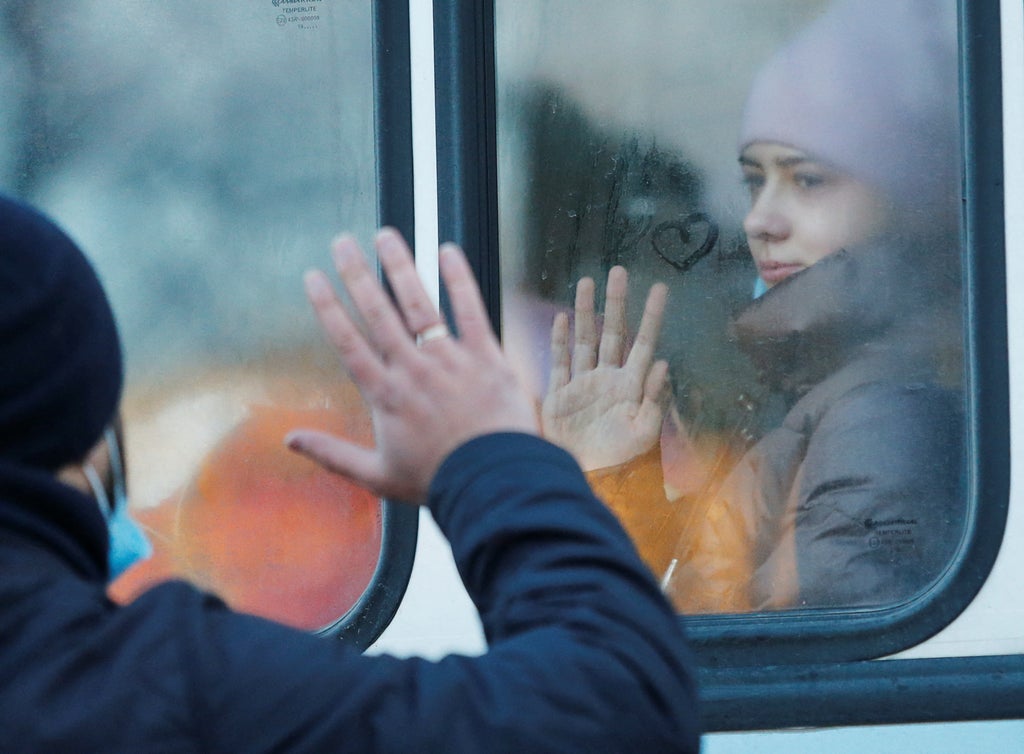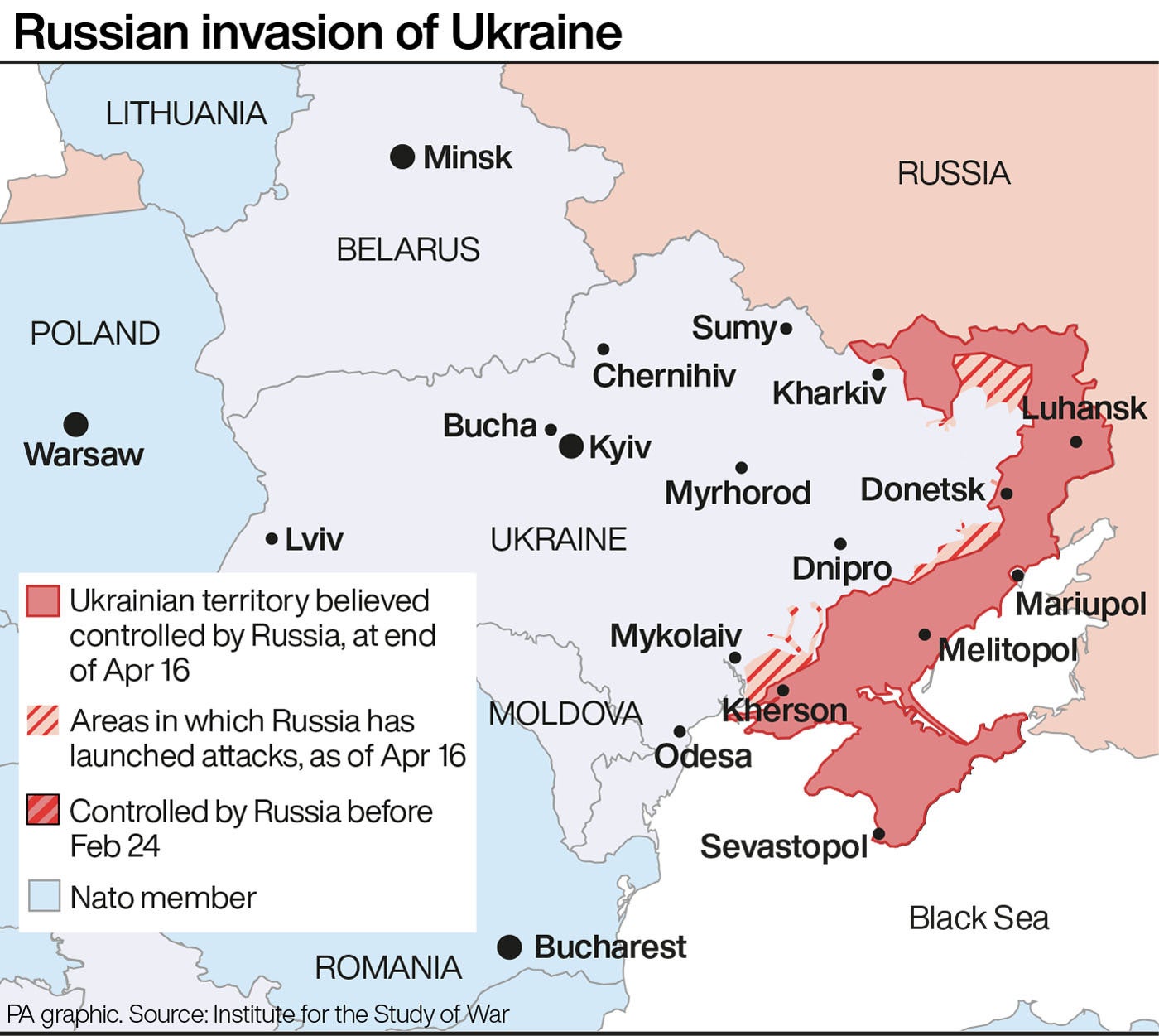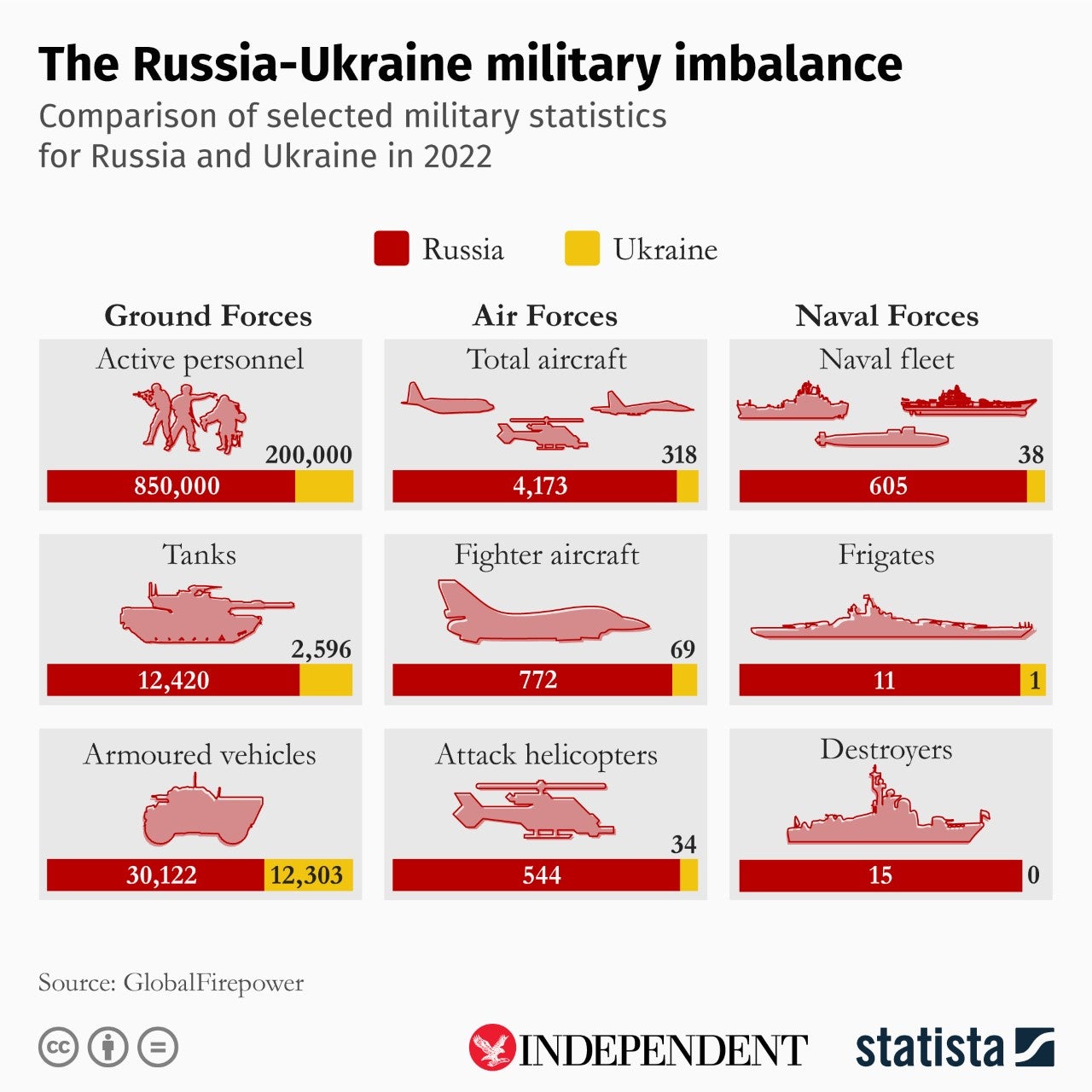
After weeks of rising tensions between Russia and Ukraine over Moscow’s build-up of armed forces along their shared border, war finally returned to Europe in February.
Russian president Vladimir Putin announced a “special military operation” in a televised address to his citizens in the early hours of Thursday 24 February, explaining that he hoped to “de-Nazify and demilitarise” Ukraine’s government, a spurious rationale that only served to draw a line under the West’s diplomatic efforts to avert calamity.
Explosions were reported soon afterwards on the outskirts of the eastern cities of Kharkiv, Kramatorsk, Mariupol, as well as the capital Kyiv. Ukrainian president Volodymyr Zelensky swiftly introduced martial law, while he remained in Kyiv to lead the defence.
Almost two months on, fighting continues to rage with thousands of people killed on both sides, including many Ukranian civilians and children, and atrocities alleged against Russian soldiers.
Tensions in Eastern Europe had simmered since December when Russia stationed an estimated 130,000 soldiers along its western border and then another 30,000 in Belarus, consistently denying it had any attention of making incursions into Ukraine.
Frantic diplomatic negotiations were pursued by the likes of US secretary of state Antony Blinken, French president Emmanuel Macron, German chancellor Olaf Scholz and UK foreign secretary Liz Truss in the hoping of averting calamity, but ultimately failed.
Then the situation escalated drastically when Mr Putin formally recognised two enclaves held by pro-Russian separatist groups, and located within Ukraine’s eastern Donbas region, as independent states.
Denis Pushilin and Leonid Pasechnik, leaders of the self-proclaimed Donetsk People’s Republic (DPR) and Luhansk People’s Republic (LPR) respectively, made a direct appeal to the Kremlin and asked for military and financial aid.
The Russian leader duly informed his security council that it was necessary that their appeals be considered seriously.

Mr Putin was told by his predecessor, Dmitry Medvedev, now deputy chair of the council, that he believed a majority of Russians would support the two regions’ independence claims, adding that around 800,000 Russian citizens lived in the DPR and LPR.
Recognition of their status as independent states quickly followed, giving Mr Putin a pretext to send troops across the border while arguing that he was doing so to protect the breakaway regions as fellow allies against Kyiv.
The international community immediately criticised the decision, with the United Nations Security Council expressing “great concern”.
The Donbas is Ukraine’s industrial heartland, rich in coal reserves, whose port cities like Mariupol are crucial for the export of Ukrainian goods via the Black Sea, notably agricultural products and metals.
Russia has concentrated much of its focus on Mariupol since the war began, shelling the city into oblivion and terrorising its remaining residents, as it seeks to secure a land bridge along the Sea of Azov so as to link up the DPR and LPR with the Crimean Pensinula and secure a stronger footing.
Those regions first declared their independence on 12 May 2014 after Mr Putin annexed Crimea, like Catherine the Great before him, in response to his preferred pro-Moscow presidential candidate, Viktor Yanukovych, having been driven from power by mass protests.
An estimated 14,000 people have been killed in the conflict in the region over the last eight years, with Nato and Ukraine accusing Russia of arming the separatist rebels, a charge the Kremlin denies.

The DPR and LPR are officially considered terrorist organisations by Kyiv, although that is not a designation agreed upon by the US, EU or other international bodies.
Their previous leaders, Alexander Zakharchenko and Igor Plotnitsky, were signatories to the Minsk agreements of 2014 and 2015, which were forged in the hope of ending the violence but which were never enacted because of differing interpretations of the accords.
Russia insisted that it was not a party to the conflict and that the agreement therefore did not apply to it, arguing that it could not remove armed forces and military hardware from Donetsk and Luhansk because the combatants were part of a separatist insurgency and not its own.
Both sides continued to disagree, with Ukraine viewing the Minsk accords as a means by which it could re-establish control over its border while Russia saw them as a chance to grant autonomy to the rebel territories, effectively giving it a voice in Ukrainian foreign policy by proxy.
The prospect of elections in Donbas was also controversial given that they raised the possibility of former separatist warlords sitting in parliament or winning high office within the police, an outcome regarded as intolerable by many Ukrainians.







